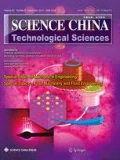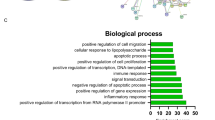Abstract
Myocardial infarction (MI) exhibits a complicated and ever-accelerated pathological change involving excessive reactive oxygen species (ROS) and the up-regulation of pro-inflammatory cytokines in the initial stage, and a permanently inadequate blood supply. Herein, an injectable hydrogel fabricated by nanoparticles (NPs) knotted thiolated hyaluronic acid (HA-SH) was reported to reverse the hostile microenvironment and rebuild the heart functions after MI Inspired by the composite shell-core structure of Ferrero chocolate sphere, a mimetic nanocarrier was designed to consist of the hydrophobic dimethyloxalylglycine (DMOG) NPs core and a thick polydopamine (PDA) shell formed by the self-polymerization of dopamine embedded with water-soluble drug epigallocatechin-3-gallate (EGCG) through π-π interactions. The resulted “Ferrero-like” NPs exhibited a “three-in-one” capacity, namely loading two distinct drugs, elimination of ROS, and serving a crosslinker to knot HA-SH. “Ferrero-like” NPs and HA-SH could rapidly form a hydrogel that exhibited a stable mechanical property, high capability to capture ROS, and programmed release of EGCG and DMOG. Four weeks after deploying the “Ferrero-like” NPs knotted hydrogels into rat infarcted hearts, the ejection fraction (EF) increased by 23.7%, and the infarct size decreased by 21.1%, and the fibrotic area reduced by 24.4%. The outcomes of immunofluorescence staining and reverse transcription-polymerase chain reaction (RT-PCR) demonstrated a down-regulation of inflammatory factors (tumor necrosis factor-α (TNF-α), interleukin-1β (IL-1β), interferon-γ (IFN-γ)), up-regulation of vascular related growth factors (hypoxia inducible factor-1α (HIF-1α), vascular endothelial growth factor A (VEGFA), von Willebrand factor (vWF), angiopoietin-1 (Ang-1)) and cardiac-related mRNAs (gap junction protein (C×43), Cadherin 2). All in all, in this report, a very simple approach to intertemporally address the intricate and ongoing pathological changes after MI by injecting “Ferrero-like” NPs knotted hydrogels is developed to reverse hostile microenvironment, with an ability to scavenge ROS, down-regulate pro-inflammation factors in the first stage, and promote angio-genesis in a long term, thereby contributing to a significant improvement of heart functions.
Similar content being viewed by others
References
Zhou T, Yan L, Xie C, et al. A mussel-inspired persistent ROS-scavenging, electroactive, and osteoinductive scaffold based on electrochemical-driven in situ nanoassembly. Small, 2019, 15: 1805440
Mahmoudi M, Yu M, Serpooshan V, et al. Multiscale technologies for treatment of ischemic cardiomyopathy. Nat Nanotech, 2017, 12: 845–855
Banerjee M N, Bolli R, Hare J M. Clinical studies of cell therapy in cardiovascular medicine. Circ Res, 2018, 123: 266–287
Benjamin E J, Muntner P, Alonso A, et al. Heart disease and stroke statistics-2019 update: A report from the american heart association. Circulation, 2019, 139: 989–999
Hasan A, Khattab A, Islam M A, et al. Injectable hydrogels for cardiac tissue repair after myocardial infarction. Adv Sci, 2015, 2: 1500122
Piantanida E, Alonci G, Bertucci A, et al. Design of nanocomposite injectable hydrogels for minimally invasive surgery. Acc Chem Res, 2019, 52: 2101–2112
Wang X, Wang C, Wang X, et al. A polydopamine nanoparticle-knotted poly(ethylene glycol) hydrogel for on-demand drug delivery and chemo-photothermal therapy. Chem Mater, 2017, 29: 1370–1376
Eng Q Y, Thanikachalam P V, Ramamurthy S. Molecular understanding of epigallocatechin gallate (EGCG) in cardiovascular and metabolic diseases. J Ethnopharmacol, 2018, 210: 296–310
Lobo V, Patil A, Phatak A, et al. Free radicals, antioxidants and functional foods: Impact on human health. Phcog Rev, 2010, 4: 118–126
Yamagata K. Polyphenols regulate endothelial functions and reduce the risk of cardiovascular disease. Curr Pharm Des, 2019, 25: 2443–2458
Wang X, Chen Z, Zhang C, et al. A generic coordination assembly-enabled nanocoating of individual tumor cells for personalized immunotherapy. Adv Healthc Mater, 2019, 8: 1900474
Konisti S, Kiriakidis S, Paleolog E M. Hypoxia—A key regulator of angiogenesis and inflammation in rheumatoid arthritis. Nat Rev Rheumatol, 2012, 8: 153–162
Mayorga M, Kiedrowski M, Shamhart P, et al. Early upregulation of myocardial CXCR4 expression is critical for dimethyloxalylglycine-induced cardiac improvement in acute myocardial infarction. Am J Physiol-Heart C, 2016, 310: H20–H28
Stoehr A, Yang Y, Patel S, et al. Prolyl hydroxylation regulates protein degradation, synthesis, and splicing in human induced pluripotent stem cell-derived cardiomyocytes. Cardiovasc Res, 2016, 110: 346–358
Scholz C C, Taylor C T. Targeting the HIF pathway in inflammation and immunity. Curr Opin Pharmacol, 2013, 13: 646–653
Zhang Q, Oh J H, Park C H, et al. Effects of dimethyloxalylglycine-embedded poly(ε-caprolactone) fiber meshes on wound healing in diabetic rats. ACS Appl Mater Interfaces, 2017, 9: 7950–7963
Purcell B P, Lobb D, Charati M B, et al. Injectable and bioresponsive hydrogels for on-demand matrix metalloproteinase inhibition. Nat Mater, 2014, 13: 653–661
Danafar H, Rostamizadeh K, Davaran S, et al. Co-delivery of hydrophilic and hydrophobic drugs by micelles: A new approach using drug conjugated PEG-PCL nanoparticles. Drug Dev Ind Pharm, 2017, 43: 1908–1918
Cao Z, Zhou X, Wang G. Selective release of hydrophobic and hydrophilic cargos from multi-stimuli-responsive nanogels. ACS Appl Mater Interfaces, 2016, 8: 28888–28896
Aryal S, Jack Hu C M, Fu V, et al. Nanoparticledrug delivery enhances the cytotoxicity ofhydrophobic-hydrophilic drug conjugates. J Mater Chem, 2012, 22: 994–999
Wang J, Wang X, Lu S Y, et al. Integration of cascade delivery and tumor hypoxia modulating capacities in core-releasable satellite na-novehicles to enhance tumor chemotherapy. Biomaterials, 2019, 223: 119465
Yi X, Zhao D, Zhang Q, et al. A co-delivery system based on a reduction-sensitive polymeric prodrug capable of loading hydrophilic and hydrophobic drugs for combination chemotherapy. Polym Chem, 2016, 7: 5966–5977
Aditya N P, Aditya S, Yang H, et al. Co-delivery of hydrophobic curcumin and hydrophilic catechin by a water-in-oil-in-water double emulsion. Food Chem, 2015, 173: 7–13
Cui P F, Zhuang W R, Hu X, et al. A new strategy for hydrophobic drug delivery using a hydrophilic polymer equipped with stacking units. Chem Commun, 2018, 54: 8218–8221
Xu W, Ledin P A, Iatridi Z, et al. Multicompartmental microcapsules with orthogonal programmable two-way sequencing of hydrophobic and hydrophilic cargo release. Angew Chem Int Ed, 2016, 55: 4908–4913
Xu Z, Liu S, Liu H, et al. Unimolecular micelles of amphiphilic cyclodextrin-core star-like block copolymers for anticancer drug delivery. Chem Commun, 2015, 51: 15768–15771
Zheng X, Zhang J, Wang J, et al. Polydopamine coatings in confined nanopore space: Toward improved retention and release ofhydrophilic cargo. J Phys Chem C, 2015, 119: 24512–24521
Wang W, Chen J, Li M, et al. Rebuilding postinfarcted cardiac functions by injecting TIIA@PDA nanoparticle-cross-linked ROSsensitive hydrogels. ACS Appl Mater Interfaces, 2019, 11: 2880–2890
Liu D, Zhang H, Cito S, et al. Core/shell nanocomposites produced by superfast sequential microfluidic nanoprecipitation. Nano Lett, 2017, 17: 606–614
Chopra S, Bertrand N, Lim J M, et al. Design of insulin-loaded na-noparticles enabled by multistep control of nanoprecipitation and zinc chelation. ACS Appl Mater Interfaces, 2017, 9: 11440–11450
Bao X, Zhao J, Sun J, et al. Polydopamine nanoparticles as efficient scavengers for reactive oxygen species in periodontal disease. ACS Nano, 2018, 12: 8882–8892
Lee H, Dellatore S M, Miller W M, et al. Mussel-inspired surface chemistry for multifunctional coatings. Science, 2007, 318: 426–430
Liu Y, Ai K, Liu J, et al. Dopamine-melanin colloidal nanospheres: An efficient near-infrared photothermal therapeutic agent for in vivo cancer therapy. Adv Mater, 2013, 25: 1353–1359
Ma Y, Zhang X, Zeng T, et al. Polydopamine-coated magnetic na-noparticles for enrichment and direct detection of small molecule pollutants coupled with MALDI-TOF-MS. ACS Appl Mater Interfaces, 2013, 5: 1024–1030
Huang N, Zhang S, Yang L, et al. Multifunctional electrochemical platforms based on the michael addition/schiff base reaction of polydopamine modified reduced graphene oxide: Construction and application. ACS Appl Mater Interfaces, 2015, 7: 17935–17946
Li Q, Barrett D G, Messersmith P B, et al. Controlling hydrogel mechanics via bio-inspired polymer-nanoparticle bond dynamics. ACS Nano, 2016, 10: 1317–1324
Pada A K, Desai D, Sun K, et al. Comparison ofpolydopamine-coated mesoporous silica nanorods and spheres for the delivery of hydrophilic and hydrophobic anticancer drugs. Int J Mol Sci, 2019, 20: 3408
Bao R, Tan B, Liang S, et al. A π-π conjugation-containing soft and conductive injectable polymer hydrogel highly efficiently rebuilds cardiac function after myocardial infarction. Biomaterials, 2017, 122: 63–71
Dahlmann J, Krause A, Möller L, et al. Fully defined in situ cross-linkable alginate and hyaluronic acid hydrogels for myocardial tissue engineering. Biomaterials, 2013, 34: 940–951
An Z, Qi Y, Huang D, et al. EGCG inhibits Cd2+-induced apoptosis through scavenging ROS rather than chelating Cd2+ in HL-7702 cells. Toxicol Mech Methods, 2014, 24: 259–267
Su S, Wang Y, Du F, et al. Dynamic covalent bond-assisted programmed and traceless protein release: High loading nanogel for systemic and cytosolic delivery. Adv Funct Mater, 2018, 28: 1805287
Ong S B, Hernández-Reséndiz S, Crespo-Avilan G E, et al. Inflammation following acute myocardial infarction: multiple players, dynamic roles, and novel therapeutic opportunities. Pharmacol Therapeut, 2018, 186: 73–87
Somasuntharam I, Yehl K, Carroll S L, et al. Knockdown of TNF-α by DNAzyme gold nanoparticles as an anti-inflammatory therapy for myocardial infarction. Biomaterials, 2016, 83: 12–22
Song M, Jang H, Lee J, et al. Regeneration of chronic myocardial infarction by injectable hydrogels containing stem cell homing factor SDF-1 and angiogenic peptide Ac-SDKP. Biomaterials, 2014, 35: 2436–2445
Yang H, Qin X, Wang H, et al. An in vivo miRNA delivery system for restoring infarcted myocardium. ACS Nano, 2019, 13: 9880–9894
Author information
Authors and Affiliations
Additional information
This work was supported by the Excellent Young Scientists Fund by National Natural Science Foundation of China (Grant No. 31822020), the National Natural Science Foundation of China (Grant No. 31771030 & 31870965), the National Key Research and Development Program of China (Grant No. 2016YFC1101301), and Tianjin Outstanding Youth Science Foundation (Grant No. 17JCJQJC46200).
Supporting Information
The supporting information is available online at tech.scichina.com and link.springer.com. The supporting materials are published as submitted, without typesetting or editing. The responsibility for scientific accuracy and content remains entirely with the authors.
Supporting Information
11431_2020_1638_MOESM1_ESM.pdf
“Ferrero-like” nanoparticles knotted injectable hydrogels to initially scavenge ROS and lastingly promote vascularization in infarcted hearts
Rights and permissions
About this article
Cite this article
Han, X., Li, L., Xie, T. et al. “Ferrero-like” nanoparticles knotted injectable hydrogels to initially scavenge ROS and lastingly promote vascularization in infarcted hearts. Sci. China Technol. Sci. 63, 2435–2448 (2020). https://doi.org/10.1007/s11431-020-1638-0
Received:
Accepted:
Published:
Issue Date:
DOI: https://doi.org/10.1007/s11431-020-1638-0




